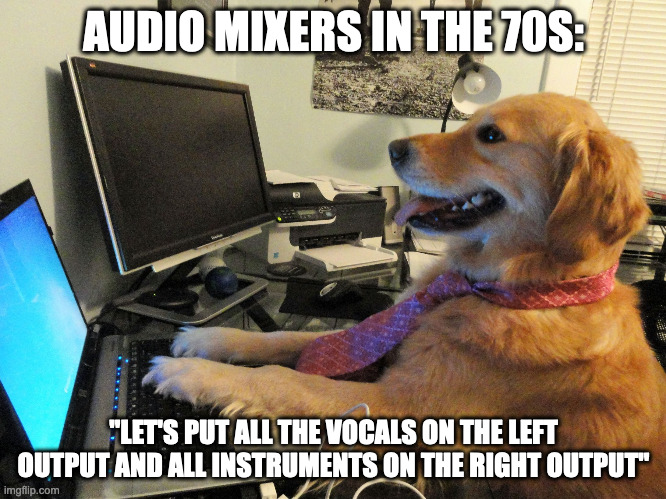this post was submitted on 07 Sep 2024
682 points (98.0% liked)
Memes
45646 readers
1041 users here now
Rules:
- Be civil and nice.
- Try not to excessively repost, as a rule of thumb, wait at least 2 months to do it if you have to.
founded 5 years ago
MODERATORS
you are viewing a single comment's thread
view the rest of the comments
view the rest of the comments

It’s an incorrect comment based on a real thing.
There was equipment with switched panning, but knob panning was so common it was referenced in diy electronic project books aimed at high schoolers.
There are some tube amplifier circuit types where the pan control actually changes directly what signal goes to what grid of what tube, and in those cases it would be useful to have switch instead of pot pan, but there were circuits to mitigate the problems and even tubes intended to take multiple grid inputs by that time.
Another comment explained how a person could work around that problem and get pot pan with split channels and they’re right.
One of the biggest reasons for switched panning was that it wasn’t always clear that you were going for a stereo effect! Often in the case of reinforcing a live band, you had some speaker cabinets for different frequencies and it would be stupid to send the trumpets to the big cabinet meant for the tympani!
Partial panning was also used in lots of the movie versions of stereo and multi source sound from over a hundred years ago so it’s not like switched panning was the only option or something
Switched panning is famously present on mastering machines though for the old (er than single groove stereo) two groove stereo record type.
So switched panning isn’t the reason for the wild mixing of the 50s and 60s, but it did exist.
Thank you, helpful.
There weren't crossovers for routing signal in live recordings?
In my youth I wanted to learn more about this stuff, but I appeared to be much younger than I was, so was shooed away.
to be 100% clear, i was talking about using a mixer to run sound to make a live band sound bigger, not to record them, but yeah, to this day lots of live sound cabinets are without crossover.
who needs em when there's a qualified technician with several amplifiers setting everything up and running the board?